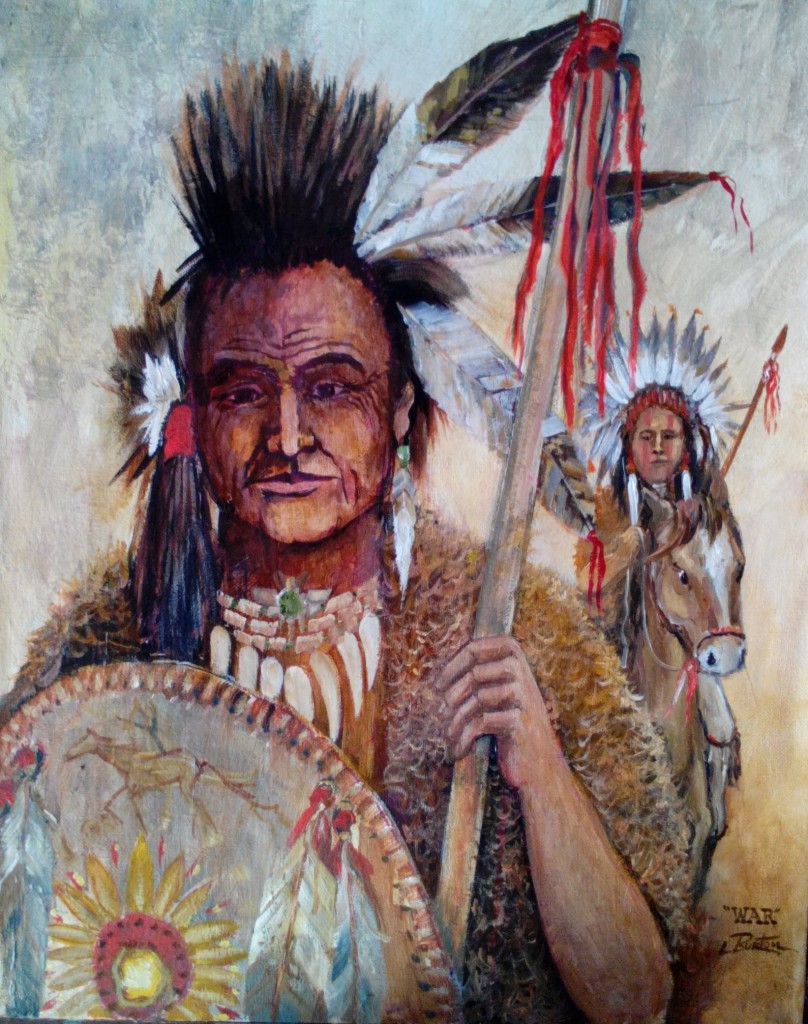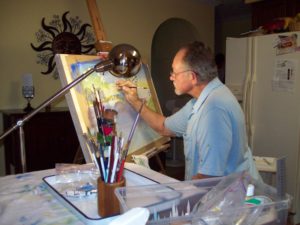
The painting I most recently finished began as a practice painting for a portion of a work in progress, Anguished Spirit (Trail of Tears).
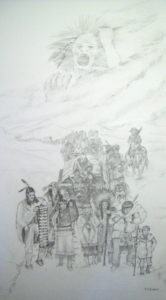
I drew the composition in full size some weeks back, and decided to paint the lower portion of the painting with its own composition. (Below)
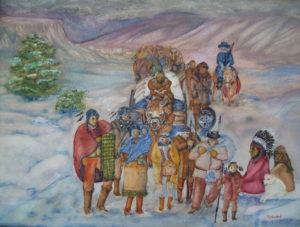
Transparent Watercolor
I did a three color wash over the entire painting space (one on top of the other when dried) Red, yellow, and blue pigment was applied over each. The red and yellow top down, and the blue with painting turned upside down and washed from bottom to top. By lifting colors, I created the sky, mountains , and foreground, creating a cold and dank day for marching through the snow covered trail.
I’m considering changing the dimension of the full size composition from 13.5″X24″ (which is the size of the graphite drawing above) to 27″X48″. In other words doubling the composition. I decided to do this when creating the painting. I’d like to have a little more wiggle room when trying to paint the many characters in the work.
I like the effect created by lifting the paint for the scenery. It wasn’t easy to do, and was somewhat anguishing, troubling, stressing, and more, but perhaps, that’s why we paint. To do the anguishing spirit and create the effect of an almost ghostly other being, I’m quite positive paint removal is the way to go. I plan to practice this portion of the painting before trying to complete the final painting.
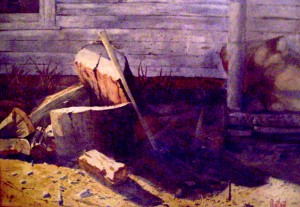
I think it was about thirty-six years ago, when I painted “Winter Kindling” that was the first time I tried lifting paint to create items in the composition that barely showed; such as, the grass blades and chopped wood and portion of the ax. It was a valuable experiment that helped me throughout many of my other paintings. However, it is wise to be cautious, planning your lifting carefully, and not overworking it.
In the painting, “The Removal – Trail of Tears”, the lifting of the paint went into, through, mixed, and all the way at times, stopping when a certain color of the three washes – Red, Yellow, Blue, and the white of the paper -showed up and added to the painting where I needed it to make the effect. If you look closely at the ground, mountain and sky, you can see where I used this method to do the painting of details for me rather than adding paint to the composition.
There are many ways to remove paint in a watercolor. In another blog I’ll discuss these methods.
If you enjoy art work depicting The Original Americans, you will appreciating my brother’s paintings at (click on) http://fineartamerica.com/
Be sure to type in the name Lynn Burton in the search sight.
